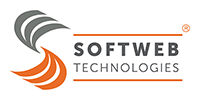The procure-to-pay (P2P) process is a critical workflow that connects procurement and accounts payable in any organization. From identifying needs to making payments, each step in the P2P cycle ensures smooth purchasing, better financial control, and cost savings. This article explains Procure to Pay p2p steps benefits and strategic impact. How automation improves efficiency, accuracy, and supplier relationships.
The P2P process
Organizations customize their procurement processes depending on factors like cost, availability, sustainability and other particular requirements. Every organization develops its own customized procurement approach to suit its business objectives. Steps involved in the procure-to-pay process are:
Identifying a need
The step begins with identifying the necessity for goods or services in the company. Departments determine what they need for operations and identify the quality and quantity standards.
Requisitioning and approval
Once the need is determined, a formal requisition for purchase is prepared. This internal record outlines the necessary goods or services and is sent in for authorization. The approval and requisition workflow ensures that the request to buy is screened and approved by the correct people, according to the company budget and procurement rules. Procure to Pay p2p steps benefits and strategic impact on business.
Sourcing
Once approved, the sourcing process starts. This vendor selection step includes selecting appropriate suppliers and requesting quotes or bids. The procurement team assesses potential suppliers on price, quality, delivery time and reliability. This step ensures that the best supplier is selected to fulfill the organization’s requirements. KPIs can be used to measure the performance and effectiveness of suppliers at this stage.
Purchase order (PO)
Once the purchase requisition has been authorized by the concerned management, the purchasing process goes on, and a purchase order is placed with the supplier. The PO is an official document that specifies the terms and conditions of the purchase, such as the quantity, price, delivery date and other details. PO is an agreement between the organization and the supplier.
Receiving
At the point of delivery, the receiving department checks that the goods or services are as stipulated in the purchase order regarding quality and quantity. This entails checking the delivered products to ascertain that they comply with the predetermined requirements. Any defects or discrepancies are rectified at this point.
Invoicing and matching
The supplier presents a bill for the goods or services. The invoice, purchase order and receiving report are checked to confirm that they are of same value. This matching process confirms that the ordered goods or services were received and that the invoice value is accurate. This three-way match process ensures there are no errors and discrepancies in the billing. Any discrepancy is reconciled before invoice authorization and proceeding to the payment phase. Procure to Pay p2p steps benefits and strategic impact.
Payment
Once the verification and approval of the invoice is done, the payment is made. The organization makes the payment to the supplier upon agreed terms. This is the last step of procurement cycle as transaction is complete.
P2P benefits
P2P simplifies and improves the procurement and financial process in an organization. This integrated approach ensures that each step from requisitioning to payment is effectively managed and coordinated, resulting in various benefits:
Advanced predictive modeling:
P2P systems utilize data analytics, process mining and other digital solutions to determine possible issues and opportunities. Advanced platforms are able to model changes prior to implementation so no unintended consequences occur, further increasing process efficiency.
Improved financial reporting and control:
By harmonizing procurement into finance systems, businesses can be aware of real-time financial expenditures and obligations. It facilitates better financial forecasting and budgeting in addition to decision-making based on a better quality of information. Procure to Pay p2p steps benefits and strategic impact. Effective P2P process will also offer deep audit trails making transaction tracking convenient, and everyone’s accountability gets simplified.
Cost savings:
The P2P process allows organizations to implement more cost-efficient procedures that enhance the bottom line. Businesses can establish close relationships with favored suppliers, negotiate improved prices and enhance order management, supplier management inventory management and spending management. Software solutions and automation save time, enhance forecasting and avoid expensive spot buys driven by unexpected production needs.
Improved operational effectiveness:
Standardizing and automating procedures takes less time and effort to accomplish tasks like generating purchase orders, matching invoices, and paying. This effectiveness not only accelerates the procurement cycle but also minimizes the possibility of human error, thus resulting in more accurate and secure transactions. Automated workflow can guarantee compliance with company policy and regulatory conditions, lowering the possibility of noncompliance.
Improved visibility:
P2P solutions , provides organizations with complete visibility of cash flow and financial obligations facilitating internal control. As all transactions are recorded, these systems make it simpler to monitor activities and identify areas of optimization opportunities.
Enhanced efficiency:
Consolidating procurement, supply chain, and accounts payable functions reduces manual errors and siloed operations. P2P solutions assist in automating workflows, accelerating invoice processing and determining opportunities for ongoing improvement.
Improved speed:
E-procurement software, electronic procurement systems that automate procurements, enables firms to computerize lengthy manual procedures. By having an optimized procurement process, organizations are in a position to quickly respond to supply chain breaks. The process of new supplier approval becomes quickens.
Strong fraud prevention:
A strong P2P system has stringent invoice matching and multiple points of review, preventing fraud and favoritism. These measures strengthen contract management and vendor management, giving contracts to the qualified vendors and ensuring the purchases are made at agreed prices, eliminating the risk of unethical practices.
Better supplier relationships:
P2P systems promote better supplier relationships by making timely and accurate payments and offering visibility into invoice status. Such reliability ensures high-quality and timely delivery of goods and makes it more likely that suppliers will go the extra mile during crunch time.
Increased control of expenditure and procurement:
P2P assists companies to retain control of their expenditure and procurement activities. Through having an organized process in place, enterprises are able to make certain purchases necessary, accredited, and compliant with their funds. Such monitoring minimizes unlawful expenditure and risks discrepancies in accounting. Centralized procurement data provides companies with a platform for also reviewing patterns in spending, having better bargaining rights with suppliers and uncovering expenditure saving potential.


